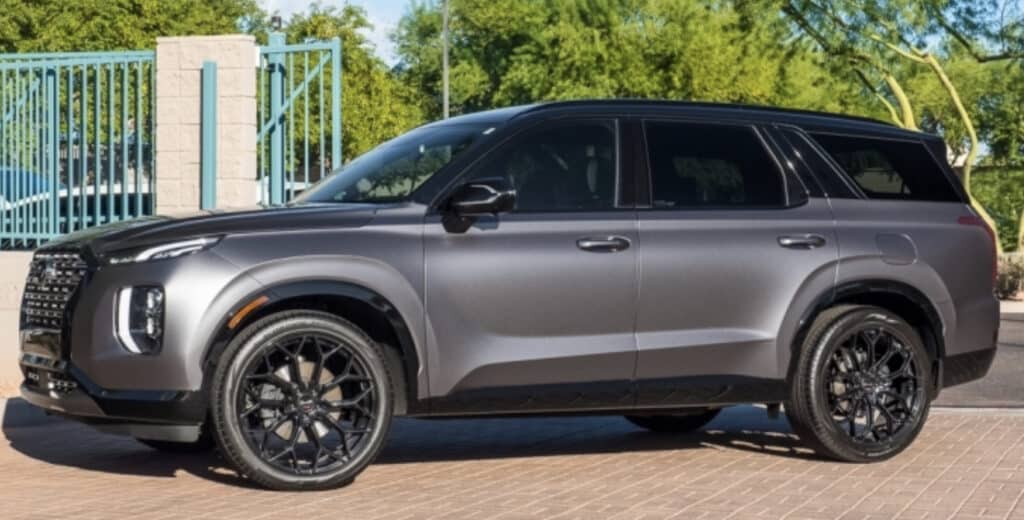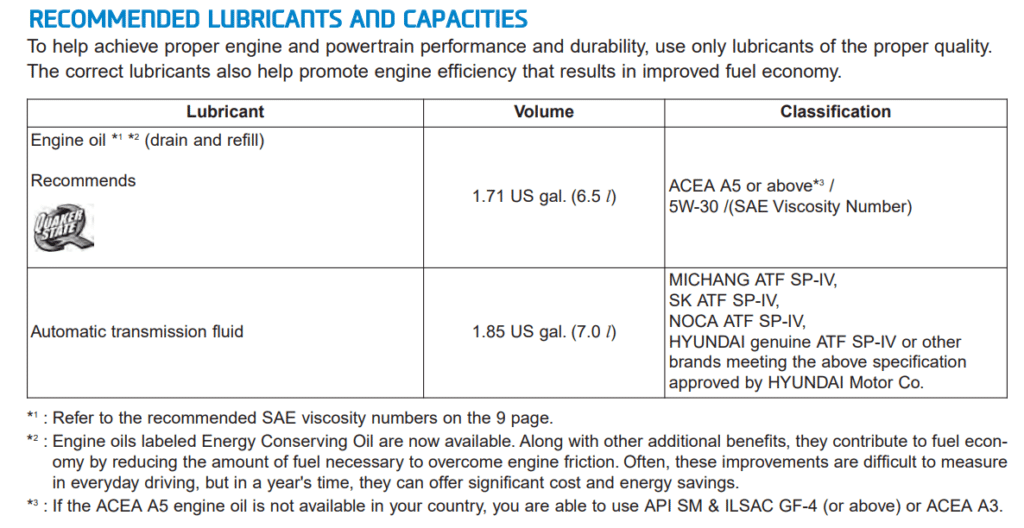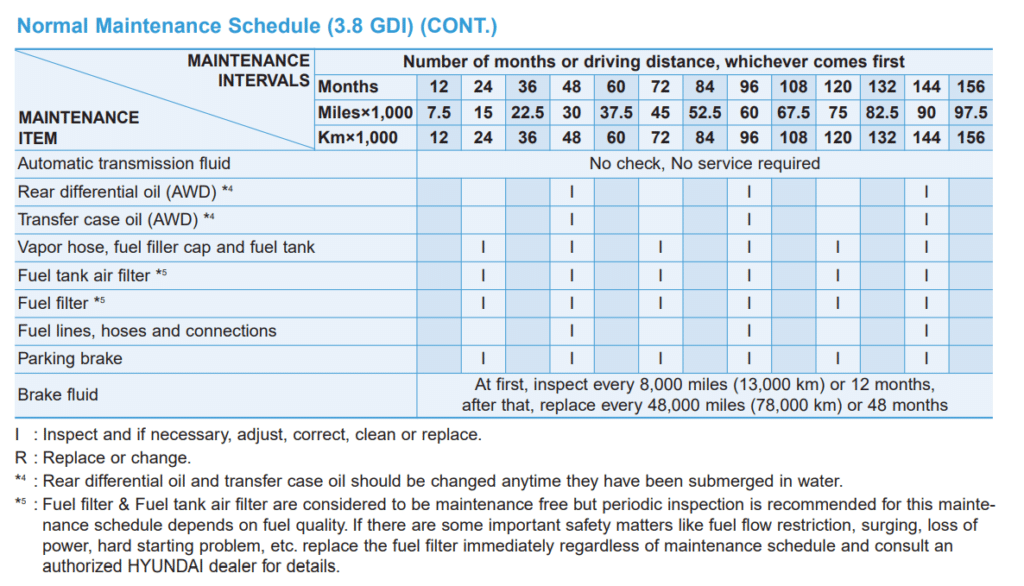The world of cars is fascinating and complex, with each make and model boasting its own unique set of specifications, features, and maintenance needs. One such marvel of automotive engineering is the Hyundai Palisade, a stylish and robust SUV that perfectly embodies Hyundai’s commitment to quality, performance, and reliability.
Just as our bodies need blood to function optimally, vehicles need transmission fluid to ensure smooth performance. The transmission fluid serves as the lifeblood of your car, playing a critical role in maintaining the vehicle’s health and longevity.
This article will delve into the nitty-gritty of the Hyundai Palisade’s transmission fluid capacity and type, providing you with invaluable information for the care and maintenance of your Palisade. Strap in as we embark on this journey of discovery!
The transmission is often considered the heart of a vehicle, and much like how our heart needs blood to pump effectively, the transmission requires fluid to function optimally. Transmission fluid plays several vital roles that significantly contribute to your vehicle’s performance and longevity.
- Lubrication: The primary role of transmission fluid is to lubricate the moving parts within the transmission system. This reduces friction, prevents overheating, and minimizes wear and tear, ensuring that the transmission operates smoothly.
- Cooling: The transmission fluid aids in cooling by absorbing and dissipating the heat generated by the transmission’s moving parts. This helps prevent overheating, which could otherwise cause significant damage.
- Transmission of Power: In automatic transmissions, like that in the Hyundai Palisade, the fluid serves as a hydraulic fluid, transmitting power from the engine to the transmission, enabling the vehicle to move.
- Cleaning and Protecting: Transmission fluid also contains detergents and other additives that help clean and protect metal surfaces from wear, resist oxidation, condition gaskets, and improve the fluid’s cooling abilities.
Notice
The type of transmission fluid a vehicle needs can vary based on the make and model of the vehicle, the type of transmission, and the vehicle’s age. Understanding the correct type and the right level of transmission fluid for your Hyundai Palisade is crucial to the performance and lifespan of the transmission system.
Hyundai Palisade Transmission Fluid Capacity And Transmission Fluid Type
The Hyundai Palisade is a mid-size crossover SUV that first rolled off Hyundai’s production lines in 2018 as a 2020 model. Named after the Pacific Palisades area of California, this vehicle has become a significant player in the competitive SUV market.
As Hyundai’s flagship SUV, the Palisade offers a spacious interior with seating for up to eight people, making it an ideal choice for larger families. This SUV is not just about size and space; it also boasts a wide array of advanced safety features and technology options that have become synonymous with Hyundai’s commitment to innovation and customer satisfaction.
The Palisade features a standard 3.8-liter V6 engine and an eight-speed automatic transmission, delivering robust and smooth performance. Since its introduction, it has primarily remained in its first generation, receiving regular updates and enhancements in subsequent model years to keep it fresh and competitive in the market.
In terms of the Palisade’s transmission fluid, understanding the type and capacity required is crucial for optimal vehicle performance and longevity. This is a fundamental aspect of vehicle maintenance, helping to ensure that your Hyundai Palisade remains reliable, efficient, and enjoyable to drive for many years to come. Let’s delve deeper into these specifics.
Hyundai Palisade (2020-Present) Transmission Fluid Type and Capacity
The Hyundai Palisade, since its inception, has been fitted with an eight-speed automatic transmission that delivers smooth, efficient performance. This transmission system requires a specific type of transmission fluid for optimal functionality.

The recommended transmission fluid for the 2020 and onwards Hyundai Palisade is the SP-IV Automatic Transmission Fluid (ATF). This is a high-performance fluid specifically designed for Hyundai’s six and eight-speed automatic transmissions. It provides optimal lubrication, and excellent thermal stability, and helps to improve fuel efficiency.
- The exact Original Equipment Manufacturer fluid that your vehicle came with
- Designed for ideal performance
- Approved and recommended by Hyundai Motor America
- Use only the ATF specified in the vehicle owner’s manual
When it comes to transmission fluid capacity, the Hyundai Palisade’s eight-speed automatic transmission holds approximately 7.4 quarts (or about 7 liters) for a total dry fill. However, it’s worth noting that during a regular fluid change service, the entire fluid capacity isn’t typically replaced. Instead, you’re likely to replace about half of that amount due to the residual fluid that remains in the transmission system.

Always ensure to use the correct transmission fluid as specified by the manufacturer and maintain the proper fluid level. This is paramount to the performance and longevity of your Hyundai Palisade. For the most accurate information, refer to your vehicle’s owner’s manual.
Common Signs Your Hyundai Palisade May Need Transmission Fluid Change
Maintaining your Hyundai Palisade’s performance and longevity means paying attention to signs that something might be off with your vehicle, including the condition of the transmission fluid. Here are some common symptoms that may indicate your Palisade needs a transmission fluid change:
- Delayed or Erratic Gear Shifts: If your vehicle is hesitating when changing gears or the shifts are unpredictable, this could signal that the transmission fluid is dirty or low and needs to be replaced.
- Noisy Transmission in Neutral: If you start to hear strange sounds like humming, buzzing, or whining when your vehicle is in neutral, it could be a sign that it’s time to change your transmission fluid.
- Transmission Slipping: If your Hyundai Palisade is having difficulty staying in the correct gear or it feels like it’s slipping into another gear, this could be due to old or low transmission fluid.
- Vehicle Surging: If your vehicle suddenly surges forward or backward for no apparent reason, this could be a sign of a problem with the transmission fluid.
- Dirty Transmission Fluid: Fresh transmission fluid is typically clear with a slightly reddish tint. If the fluid is dark, dirty, or has a burnt smell when checked, it’s a clear sign that it needs to be changed.
- Transmission Overheating: Old, dirty, or low transmission fluid can cause the transmission to overheat, which can lead to severe damage. If you see the transmission warning light come on or experience a burning smell, it could be due to overheating of the transmission system.
If you notice any of these signs, it’s crucial to consult with a professional mechanic promptly. Regular maintenance, including timely transmission fluid changes, can prevent more significant, costly repairs in the future and help ensure the performance and longevity of your Hyundai Palisade.
How Often Should You Change Transmission Fluid in Your Hyundai Palisade?
The frequency of transmission fluid changes can depend on the specific model of your Hyundai Palisade, driving conditions, and the type of transmission fluid used. However, as a general guideline, many manufacturers recommend changing the transmission fluid approximately every 60,000 to 100,000 miles.

For vehicles used under more severe operating conditions, such as frequent towing, stop-and-go traffic, or harsh climates, more frequent changes may be necessary. Always adhere to the service intervals specified in your vehicle’s owner’s manual for the most accurate information.
Conclusion
Understanding the ins and outs of your Hyundai Palisade’s transmission fluid is crucial to its performance and longevity. The type and capacity of transmission fluid your Palisade requires, coupled with knowing when to change the fluid, significantly contribute to your vehicle’s functionality.
Regular maintenance, including prompt attention to changes in your vehicle’s performance and timely fluid changes, can help ensure that your Hyundai Palisade continues to provide reliable service for many years to come.
Remember, if you notice any signs of potential issues, consult a professional mechanic promptly. After all, prevention is always better than cure, especially when it comes to maintaining the health of your Hyundai Palisade.
Last update on 2025-12-22 / Affiliate links / Images from Amazon Product Advertising API
















